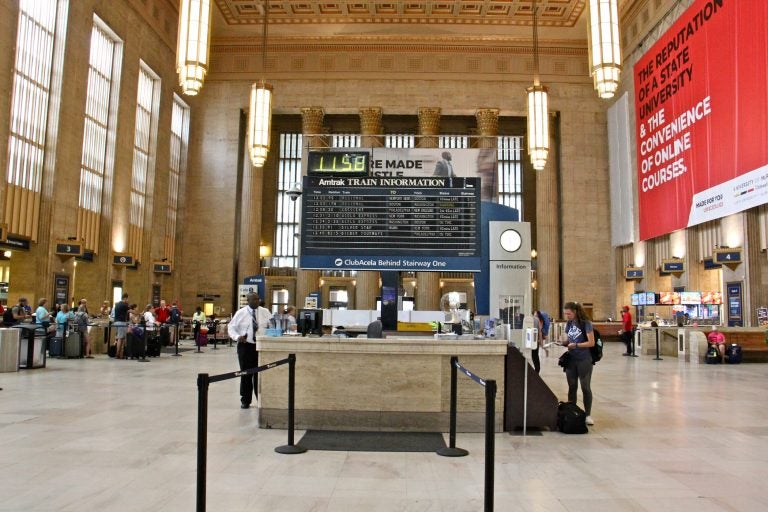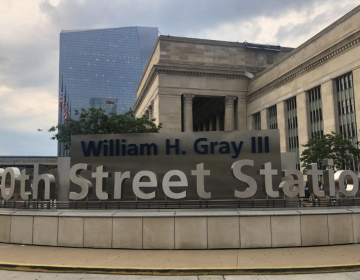Congressman Boyle: Amtrak open to long-term plan for new split-flap sign at 30th Street Station
Congressman Boyle said Amtrak officials are open to replacing the old split-flap sign with a new one as part of a major renovation of 30th Street Station.

Lobby at 30th Street Station. (Emma Lee/WHYY)
Passengers and history buffs worried about the fate of the iconic split-flap schedule board at Philadelphia’s 30th Street Station got a new reason to hope Monday.
According to U.S. Rep. Brendan Boyle, Amtrak is open to the idea of replacing the sign — with its pleasing “clickety-clackety” sound — with a new split-flap schedule board designed by a Philadelphia-area firm.
Boyle has led the charge to save the sign since it was revealed in November that Amtrak could be replacing it with a digital sign as part of a $100 million renovation project.
The congressman met with Amtrak officials and local stakeholders Monday morning to discuss the preservation of the sign, also known as a “Solari board.”
While the flipboard is beloved by the public, Boyle said it has two things going against it.
First, the board, which was made in the 1970s, does not comply with the 1990 Americans with Disabilities Act. It also doesn’t integrate with Amtrak’s Passenger Information Display System.
“As much as I would like to believe that we should preserve this sign, the belief is that in order to come in with ADA compliance to retrofit this actual sign behind us would be enormously challenging and costly,” Boyle said.
However, during the meeting, Philadelphia-based Oat Foundry, an engineering design company that specializes in split-flap signs, stepped up to offer a sign that is both ADA compliant and integrates with Amtrak’s information display system, while keeping the vintage style of the more than 40-year-old Solari board.
Mark Kuhn, CEO of Oat Foundry, the only split-flap manufacturer in North America, said small letters, lack of audible announcements—arrivals, departures, delays, and not meeting requirements for “conspicuity” are strikes against the sign, per the ADA.
Kuhn said the first sign would take about three to six months to produce, and that it would cost more than a “TV screen” but would be cheaper than keeping the old sign. He would not provide an estimate, but it would “certainly be in the budget for Amtrak.”
“I am very confident that we can have what I call a win-win-win-win,” said Boyle. “That is a sign that is ADA compliant, that connects with the existing Amtrak information system, that preserves the ambiance and look and sound of the current sign and is actually created and produced and manufactured by American workers based in Philadelphia. Those four things can happen.”
Over the course of the year, Boyle said Amtrak will be sending out requests for proposal for an entire redesign of 30th Street Station, and that the transit company is open to an updated sign similar to the old one being part of that redevelopment.
Despite “pressing them three times,” Amtrak is unwilling to offer a “100 percent firm commitment” without seeing formal plans for a new sign, Boyle said, but said he did feel confident that they’ll strongly consider.
“As someone who works on appropriations for Amtrak, they have every incentive to make sure they work with us,” he said.
Amtrak issued a statement offering its appreciation for “the interest of the congressman and the community.”
“We continue progressing toward a January installation of our new and improved system,” it said. “However, during this time we are happy to discuss alternatives for consideration during the upcoming master development process. We will keep an open dialogue with the congressman and the local community as we work to provide a modern and universally accessible station experience.”
Amtrak and Oat Foundry are scheduled to meet on Friday to discuss the offer.
WHYY is your source for fact-based, in-depth journalism and information. As a nonprofit organization, we rely on financial support from readers like you. Please give today.





